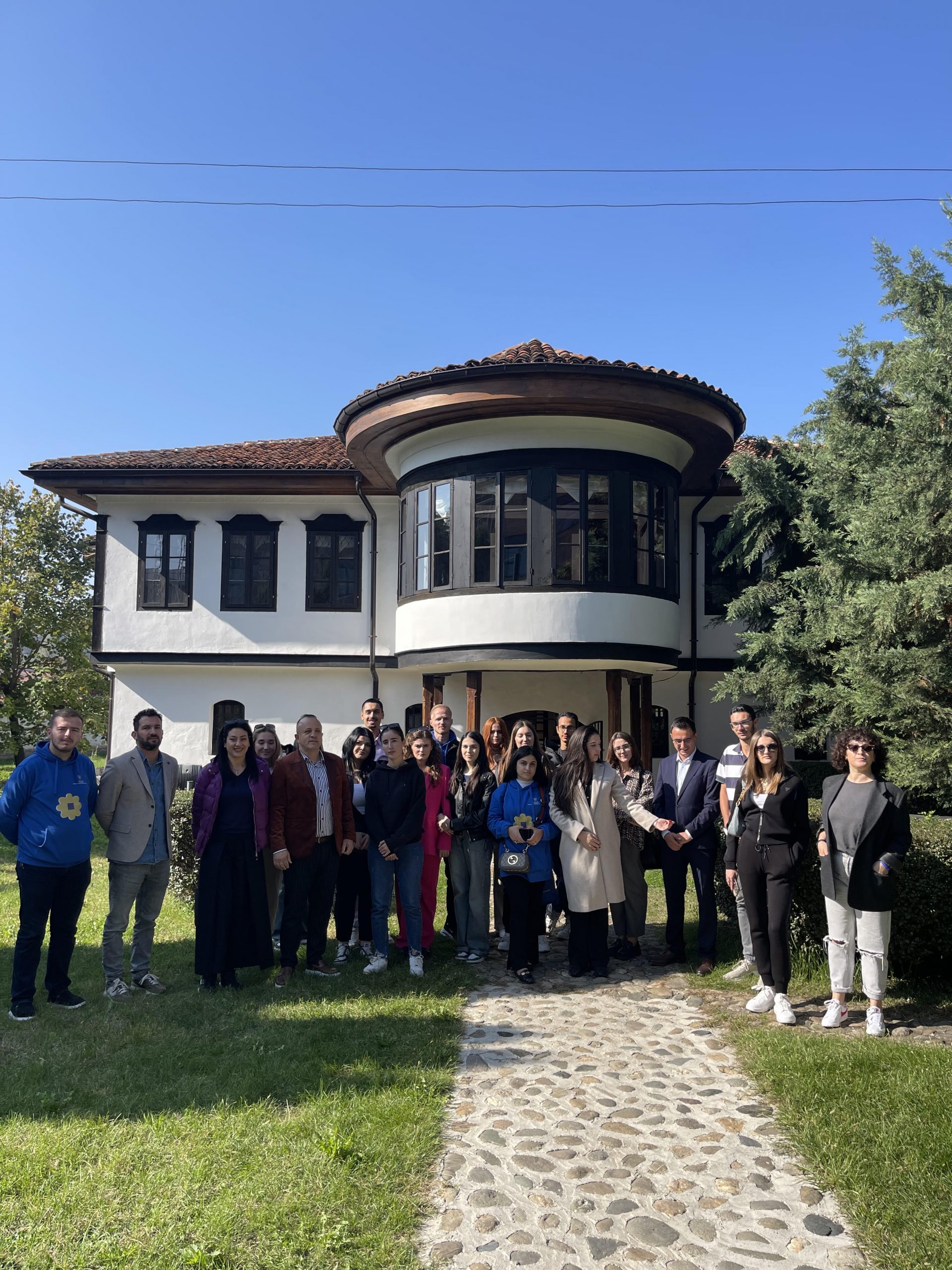
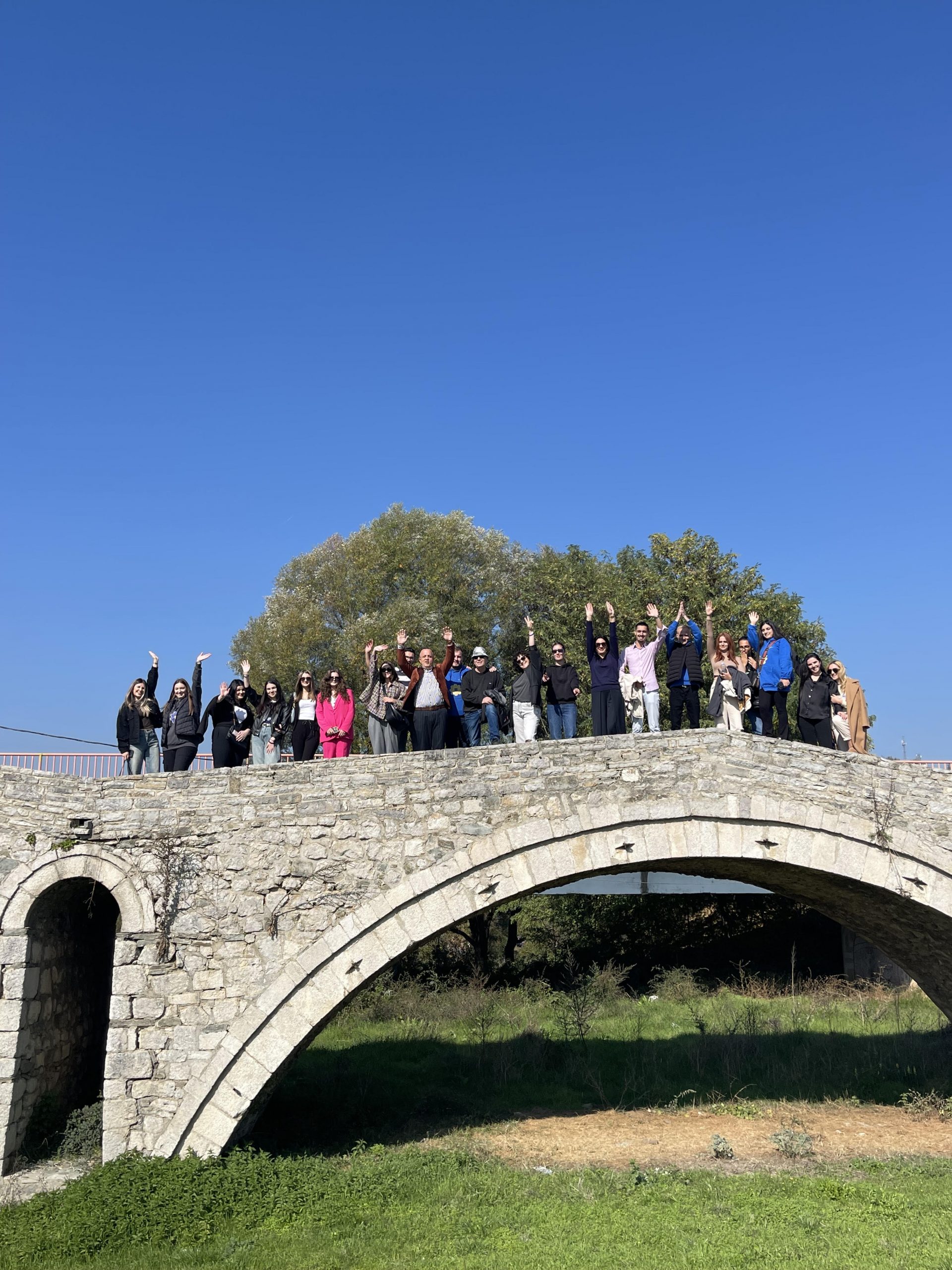


The First Day of the Youth Cultural Exchange in Kosovo.
On October 21, the Youth Cultural Exchange “Heritage Yesterday, Today, and Tomorrow” began in Kosovo, where on the first day the young participants visited the city of trade and craftsmanship, Gjakova. The young people had the opportunity to learn about the history of places such as:
The old bazaar is the heart of the economy in Gjakova, in the city of trade and goods, which served the surrounding villages in the municipality of Gjakova, on the border between Kosovo and Albania.
The Ethnographic Museum of Gjakova is located in a traditional house built in 1830. The decorative values are particularly highlighted by the large room on the left side of the building and the fireplaces, which are found in all four rooms.
The Tabak Bridge was completed in 1790 and is located over the Erenik River, south of the city of Gjakova. This bridge connects Gjakova with Has, Reka e Keqe, the Gjakova Highlands, villages to the south, and the Albanian cities of Bajram Curri, Shkodra, and Kukës.
The Terzive Bridge is a cultural heritage monument located near the village of Bishtazhin, close to Gjakova in Kosovo. It is a very important example of Ottoman bridge construction in Kosovo.
The Fshajtë Bridge is located in the canyon of the White Drin and has been a protected natural area since 1986. The bridge is situated in the village of Fshaj and extends across the territory of the municipalities of Gjakova and Rahovec.
The Second Day of the Youth Cultural Exchange in Kosovo.
On October 22, the second day of the youth exchange took place, where the young participants made their first stop at the ancient Illyrian city, one of the most important urban centers of the time, the Archaeological Park of Ulpiana.
Ulpiana is one of the largest ancient urban centers in Kosovo. The archaeological park “Ulpiana,” which was once a city by the name of Ulpiana, has been inhabited since the early ancient periods known as the Stone Age, up until the Roman rule.
The young participants continued to explore other natural and historical treasures, such as the magnificent Fortress of Novobërdë.
The Fortress of Novobërdë located on a small mountain between Përlepnicë and Krivarekë, is a medieval castle and a cultural monument in Artanë, Kosovo. The fortress consists of two sections known as the Upper Fortress and the Lower Fortress. The Upper Fortress has six towers: the eastern tower and the western tower.
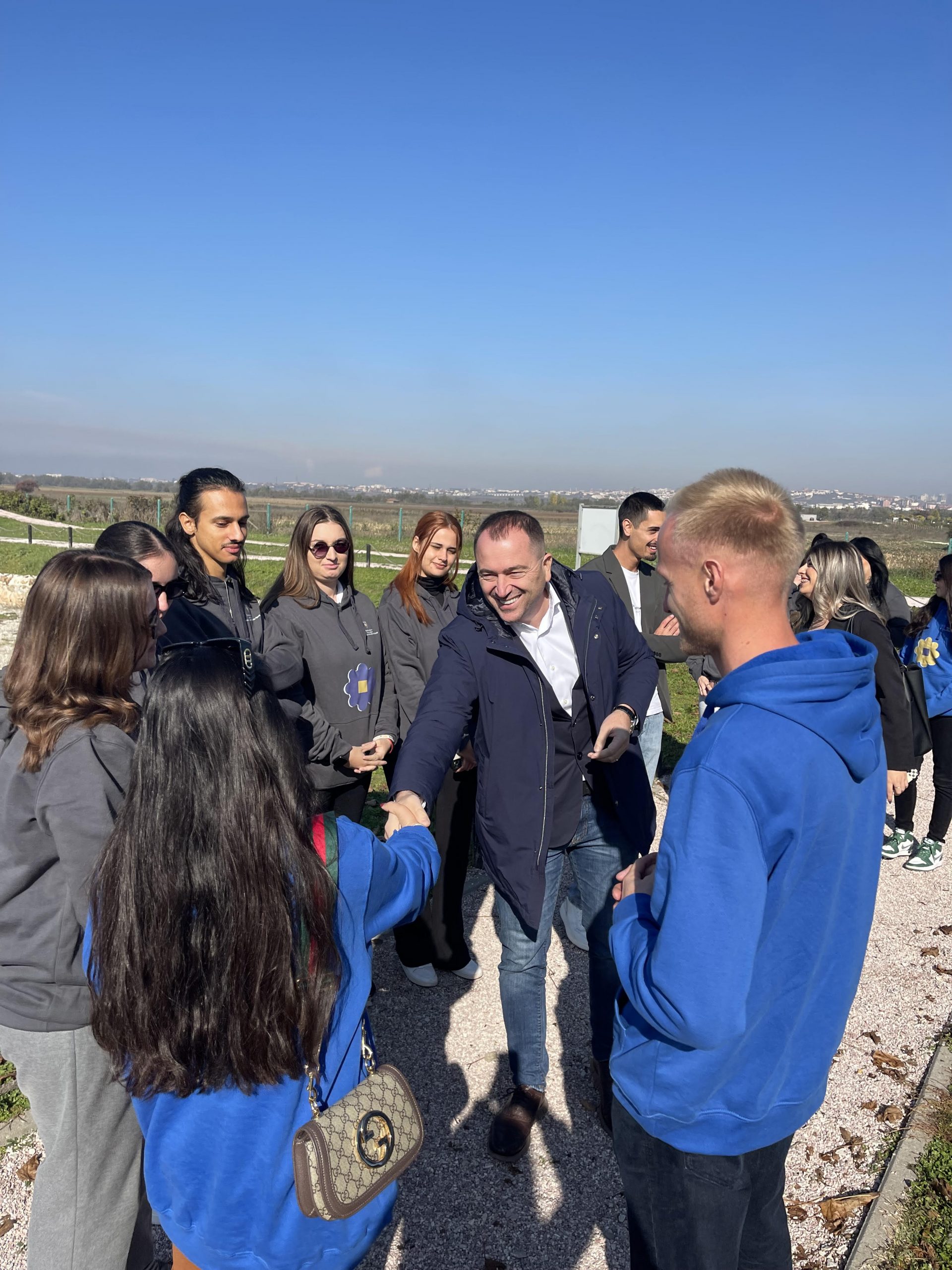
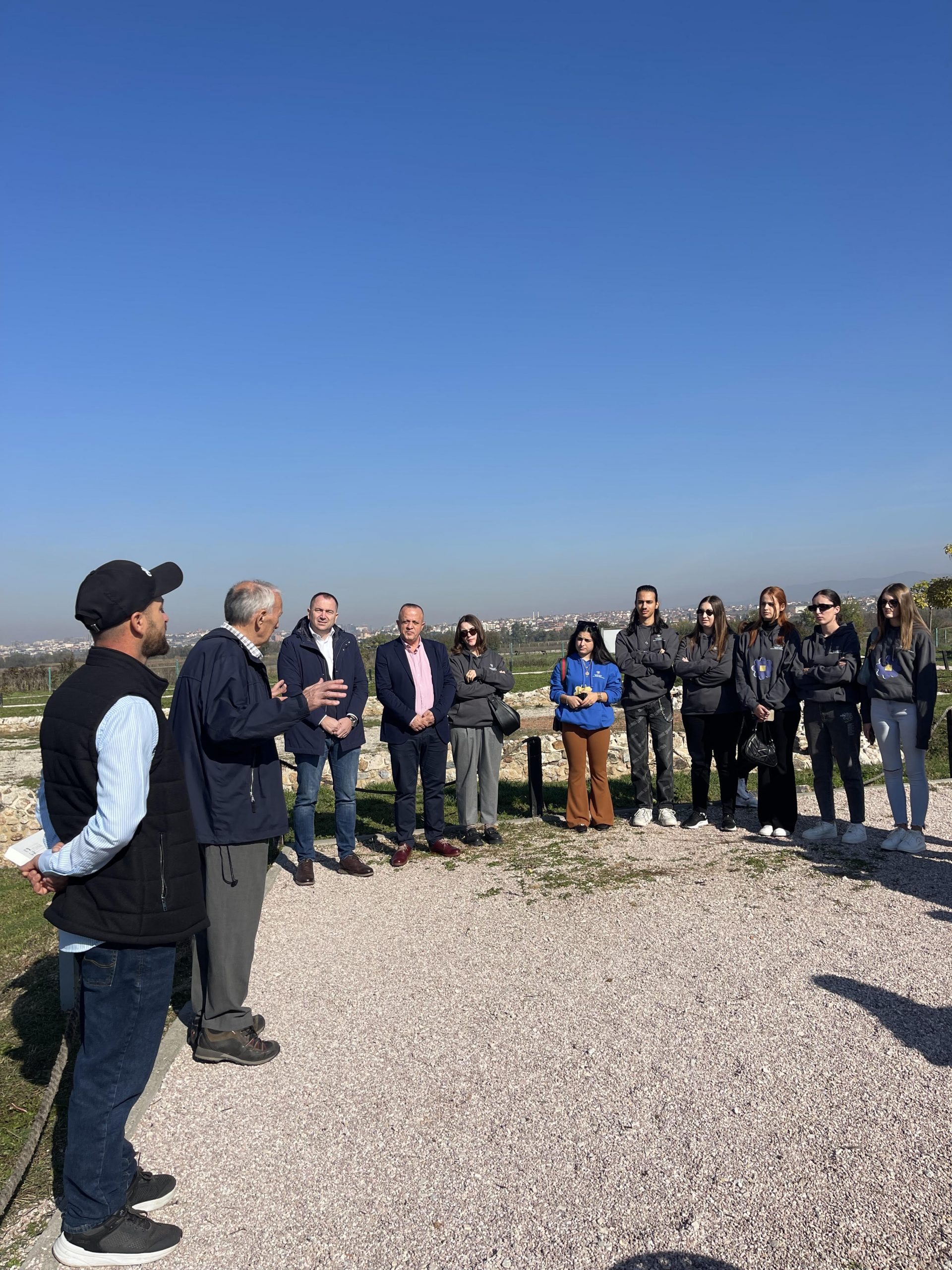

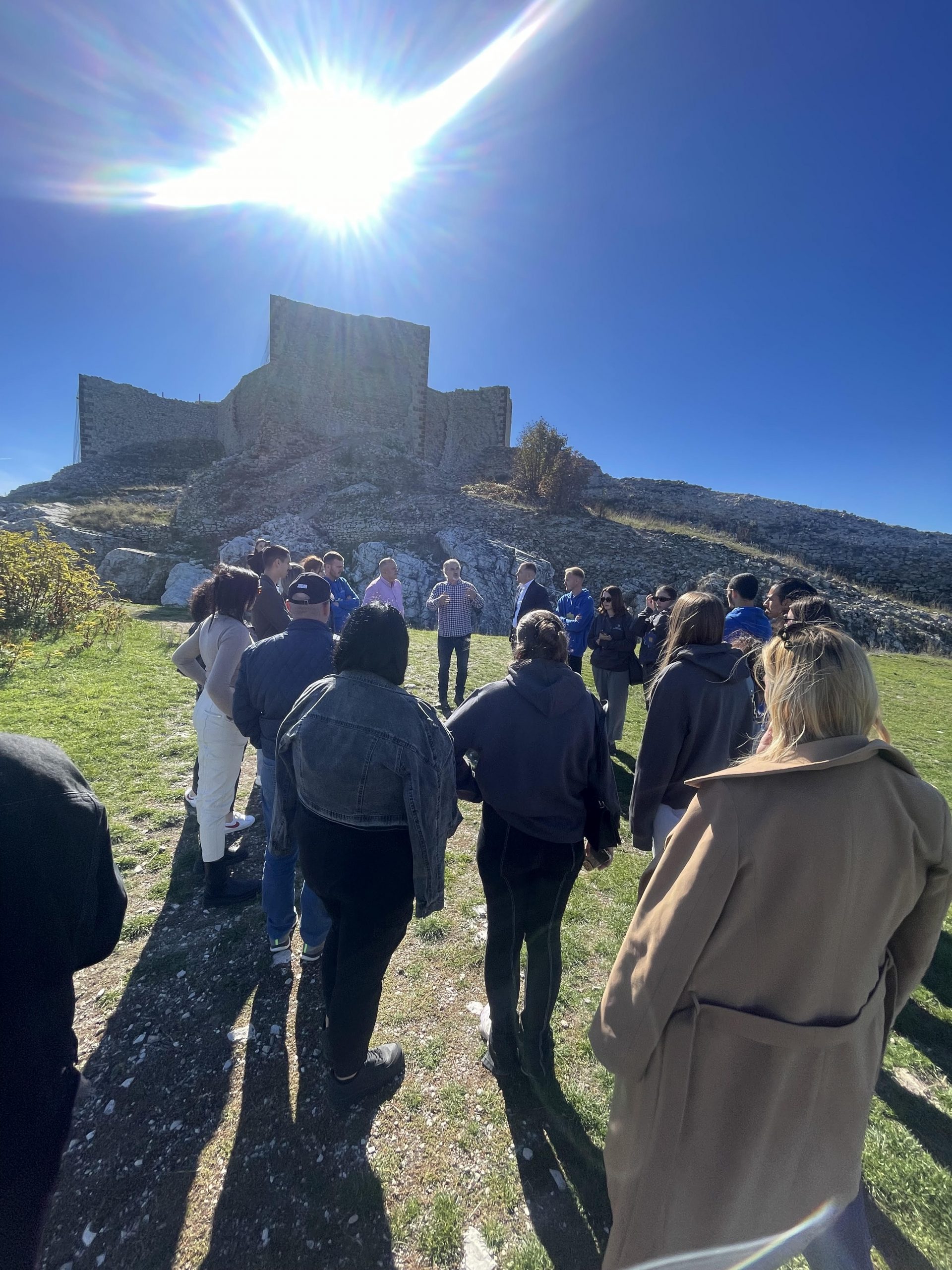





The Third Day of the Youth Cultural Exchange in Kosovo.
On October 23, the third and final day of the youth exchange between the young people of Kosovo and those from Albania concluded as part of the youth awareness program on bilateral cultural heritage. They visited the League of Prizren, the Archaeological Museum, and the Fortress of Prizren. The exchange ended with a ceremony where certificates were distributed to the participating youth.
The Complex of the League of Prizren is located in the old center of the city of Prizren and has special cultural, historical, educational, social, and environmental significance. This complex is situated between the Lumbardhi River of Prizren, the Marashi Complex, the Marashi Plane Tree, and the slopes of the Fortress of Prizren. Within the Complex are the Building of the League of Prizren, the Museum, the Library and Reading Room, the Art Gallery, the Madrasa, the Mosque of Gazi Mehmet Pasha, the Tomb, as well as residential buildings.
The Archaeological Museum of Prizren is a regional museum that operates in the spaces of the Hamam of Prizren, built in 1498, and in the areas of the Clock Tower of Prizren, constructed in 1948.
The Fortress of Prizren is a medieval castle located in Prizren, in the south of Kosovo. The fortress was declared a Cultural Monument of Special Importance in 1948. Its origins date back to the late Bronze Age and extend through the Balkan Wars of 1912-1913, after which it was definitively abandoned.
